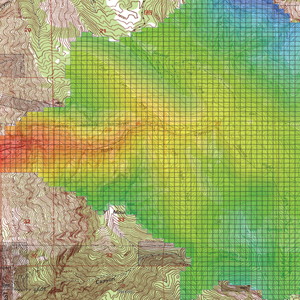We use cookies to make your experience better. To comply with the new e-Privacy directive, we need to ask for your consent to set the cookies. Learn more.
HEC-1
Modeling Single Storm Events Including Rainfall, Losses, Unit Hydrographs, and Stream Routing

Application:Hydrologic Modeling
Method:Lumped Parameter
Model Type:1D
Developer:Hydrologic Engineering Center,
U.S. Army Corps of Engineers
Why HEC-1 with WMS?
WMS provides a custom interface to the HEC-1 model offering a simple way to set model parameters and a graphical user interface to run the model and visualize the results. Gather background data from a variety of sources from GIS to CAD and access online data from numerous databases of maps, images, elevation, land use, and soil data. WMS allows you to interact with models in true 3D taking advantage of optimized OpenGL graphics and to create photo-realistic renderings and animations for PowerPoint, print, and web presentations.
Try WMS Free for 14 Days >Purchase WMS with HEC-1 >
HEC-1 Description:
HEC-1, developed by the Hydrologic Engineering Center in Davis, California, has long been one of the industry-standard programs for hydrologic analysis. It is a single storm event, lumped parameter model, but includes several different options for modeling rainfall, losses, unit hydrographs, and stream routing. The HEC-1 interface contained within WMS makes it simple to enter and manage input data and display analysis results.
The HEC-1 model is designed to simulate the surface runoff response of a river basin to precipitation by representing the basin as an interconnected system of hydrologic and hydraulic components. Each component models an aspect of the precipitation-runoff process within a portion of the basin, commonly referred to as a subbasin. A component may represent a surface runoff entity, a stream channel, or a reservoir. Representation of a component requires a set of parameters which specify the particular characteristics of the component and mathematical relations which describe the physical processes. The result of the modeling process is the computation of streamflow hydrographs at desired locations in the river basin.
